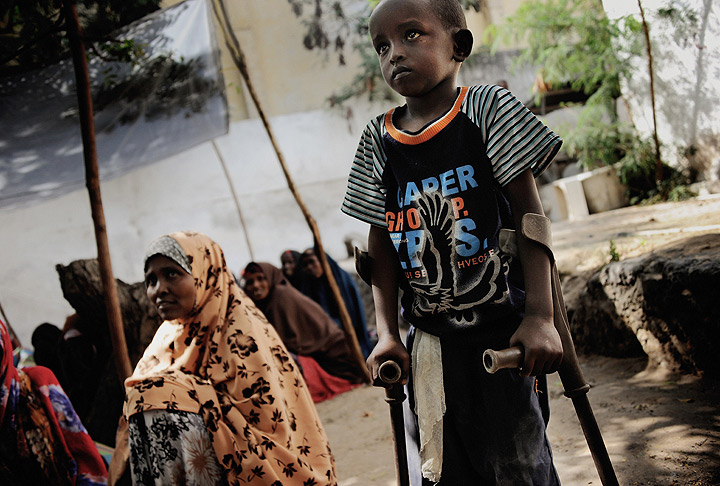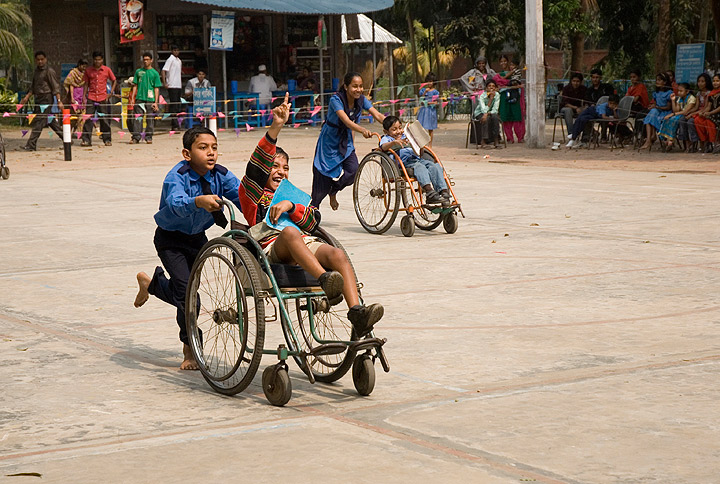TORONTO – Children with disabilities are among some of the most marginalized people in the world, according to a new report from UNICEF.

Released on Thursday, 2013’s The State of the World’s Children report titled “Children with Disabilities” found that one of the main obstacles facing children with disabilities is they are often “invisible” as the number of children living with disabilities globally is unknown.
“It is unacceptable that in many countries around the world children with disabilities face institutionalization, abandonment or neglect,” said David Morley, UNICEF Canada’s CEO and president.
“Children with disabilities must have the same opportunities as all other children.”
According to the report, children with disabilities often don’t get registered at birth and therefore there is no pressure to develop more data that will help the public better to understand what types of services children require.
Few countries have reliable information on how many of their citizens are children with disabilities, what disabilities they have or how these disabilities affect their lives. The World Health Organization said that 93 million children—or 1 in 20 of those aged 14 or younger—worldwide live with a moderate or severe disability of some kind.
The United Nations says that children living in poverty are among the least likely to enjoy the benefits of education and health care, for example, but children who live in poverty and have a disability are even less likely to attend the local school or clinic.
Changing attitudes
A 2007 study found that ignorance about the nature and causes of impairments, invisibility of the children themselves, serious underestimation of their potential and capacities, and other impediments to equal opportunity and treatment all conspire to keep children with disabilities silenced and marginalized.
VIDEO: See the child – before the disability, urges new report
“They have dreams, they have the drive to fulfill those dreams,” said the report’s editor Abid Aslam in a YouTube video. “Given the fair chance, they contribute to the vitality of their homes and their communities.”
The State of the World’s Children report said that prejudice against children with disabilities can be reduced through interaction, as demonstrated by activities that bring together children with and without disabilities.
“Social integration benefits everyone,” said the report. “Children who have experienced inclusion – in education, for example – can then be society’s best teachers in reducing inequalities and building an inclusive society.”
Inclusion beyond integration
UNICEF said the inclusion of children with disabilities in community life must go beyond integration.
“Integration might be attempted simply by admitting children with disabilities to ‘regular’ schools,” said the report. “Inclusion, however, is possible only when schools are designed and administered so that all children can learn and play together. This would entail providing such needed accommodations as access to Braille, sign language and adapted curricula.”
Gender a crucial factor
The report findings state that girls are less likely than boys to receive care and food and are more likely to be left out of family interactions and activities, known as “double disabled.”
“They confront not only the prejudice and inequities encountered by many persons with disabilities, but they are also constrained by traditional gender roles and barriers,” said the report.
According to a 2004 study, girls with disabilities are also less likely to get an education, receive vocational training or find employment than are boys with disabilities or girls without disabilities.
Access to education
According to the report, children with disabilities are disproportionately denied their right to education.
A survey in 51 counties found that 51 per cent of boys with disabilities complete primary school, compared to 61 per cent of boys without a disability. In contrast, the same survey from the World Health Organization found that 42 per cent of girls with a disability complete primary school, compared to 53 per cent of girls without a disability.
In Malawi, for example, a child with a disability is twice as likely to have never attended school.
Studies have shown that a strong link exists between poverty and disability, which in turn is linked to gender, health and employment issues.
Victims of abuse, forced sterilization and abortion
The report found that children with disabilities are more than three times more likely to be victims of abuse. Girls are particularly vulnerable and, in many countries like Namibia, Kenya, Chile and Uzbekistan, are subject to forced sterilization or abortion.
Forced or coerced sterilization is often justified by claiming that it is in the “best interests” of women and girls with disabilities wrote Shantha Rau Barriga, a senior advocate and researcher on disability rights at Human Rights Watch.
The Convention on the Rights of Persons with Disabilities reinforces the right to found and maintain a family and to retain fertility on an equal basis with others.
Convention on the Rights of Persons with Disabilities
Adopted in 2006, the Convention on the Rights of Persons with Disabilities and its Optional Protocol is the first comprehensive human rights treaty of the 21st century and is the first human rights convention to be open for signature by regional integration organizations.
The Convention works to change the attitudes and approaches to people with disabilities and as of early 2013, 155 countries have signed the convention and 128 countries have ratified the convention, including Canada.
The Convention states that governments around the world have taken upon themselves the responsibility of ensuring that all children, irrespective of ability or disability, enjoy their rights without discrimination of any kind.
About one third of the world’s nations have not signed the Convention.
The role of media
The The State of the World’s Children report said that media plays a key role in how children with disabilities are represented.
“By including nuanced portrayals of children and adults with disabilities, media can send out positive messages that they are members of families and neighbourhoods and can also counter misrepresentations and stereotypes that reinforce social prejudices,” read the report.






Comments